Kingdom Plantae Higher classification Tridax | Genus Tridax Rank Species | |
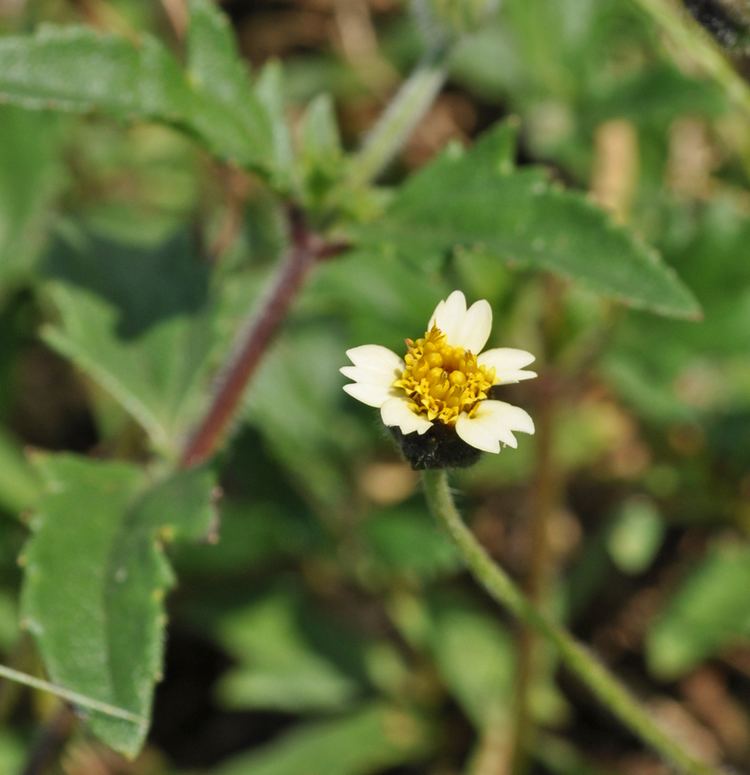 | ||
Similar Tridax, Daisy family, Bidens alba, Emilia sonchifolia, Amaranthus viridis | ||
Tridax procumbens 03122016004
Tridax procumbens, commonly known as coatbuttons or tridax daisy, is a species of flowering plant in the daisy family. It is best known as a widespread weed and pest plant. It is native to the tropical Americas, but it has been introduced to tropical, subtropical, and mild temperate regions worldwide. It is listed as a noxious weed in the United States and has pest status in nine states.
Contents
- Tridax procumbens 03122016004
- Tridax procumbens coat buttons heliantheae erva de touro
- Common names
- Description
- Use in traditional medicine
- Research
- Chemical constituents
- References
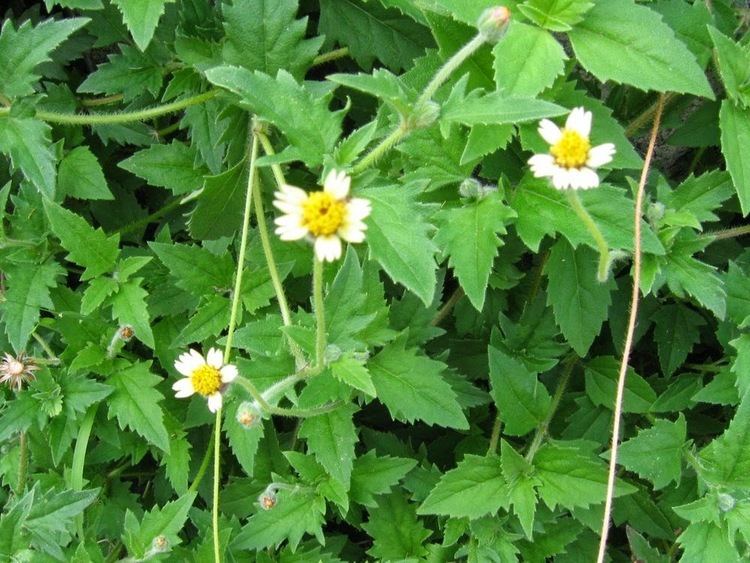
Tridax procumbens coat buttons heliantheae erva de touro
Common names
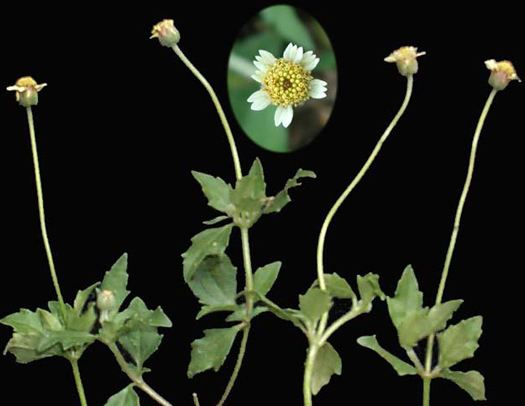
Its common names include coatbuttons and tridax daisy in English, jayanthi in Kannada, cadillo chisaca in Spanish, herbe caille in French, jayanti veda in Sanskrit, ghamra in Hindi, bishalya karani (ବିଶଲ୍ୟକରଣୀ) in Oriya, kambarmodi in Marathi, gayapaaku (గాయపాకు) & gaddi chemanthi (గడ్డి చామంతి) in Telugu,vettukaaya poondu or kinatruppasan (கிணற்றுப்பாசான்) in Tamil, kotobukigiku in Japanese and tīn túkkæ (ตีนตุ๊กแก; "gecko feet") in Thai.
Description
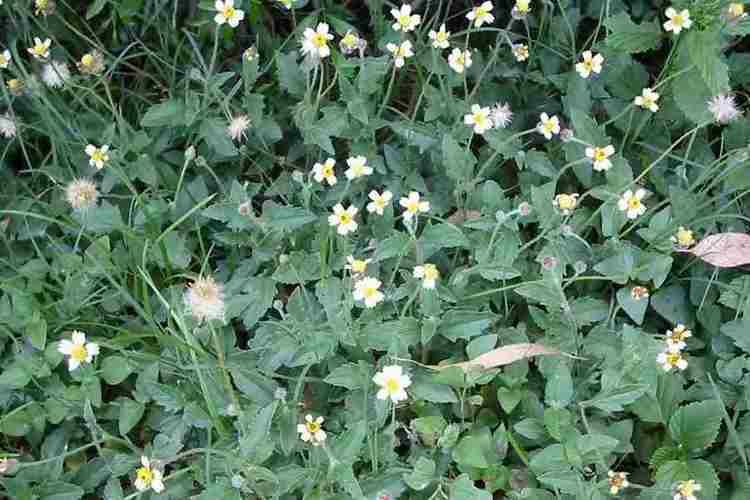
The plant bears daisylike yellow-centered white or yellow flowers with three-toothed ray florets. The leaves are toothed and generally arrowhead-shaped. Its fruit is a hard achene covered with stiff hairs and having a feathery, plumelike white pappus at one end. Calyx is represented by scales or reduced to pappus. The plant is invasive in part because it produces so many of these achenes, up to 1500 per plant, and each achene can catch the wind in its pappus and be carried some distance. This plant can be found in fields, meadows, croplands, disturbed areas, lawns, and roadsides in areas with tropical or semi-tropical climates. It is listed in the United States as a Noxious Weed and regulated under the Federal Noxious Weed Act.
Use in traditional medicine
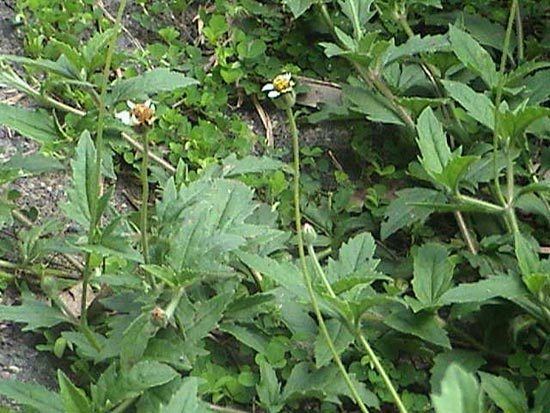
Traditionally, Tridax procumbens has been in use in India for wound healing and as an anticoagulant, antifungal, and insect repellent. The juice extracted from the leaves is directly applied on wounds. Its leaf extracts were used for infectious skin diseases in folk medicines. It is used in Ayurvedic medicine for liver disorders, hepatoprotection, gastritis, and heartburn. Tridax procumbens is also used as treatment for boils, blisters, and cuts by local healers in parts of India.
Research
Tridax procumbens has been studied for several potential therapeutic properties including antiviral, antioxidant, antibiotic, wound healing, insecticidal, and anti-inflammatory activities in in vitro studies and animal models. A study by Gamboa-Leon (2014) showed that a mixture of Tridax procumbens and Allium sativum extracts was a promising treatment for cutaneous leishmaniasis. The mixture of Tridax procumbens and A. sativum extracts was better at controlling Leishmania mexicana infection while not being toxic when tested in the acute oral toxicity assay in mice.
Whole plant ethanolic extract of Tridax procumbens showed significant anti-arthritic effect, antidiabetic and antihyperlipidemic effects in rats using the Freund's Complete Adjuvant (FCA) model and streptozotocin-induced diabetic model.
A study had found in vitro cytotoxic properties of Tridax procumbens extracts against human prostate epithelial cancer cell line PC 3.
Chemical constituents
The flavonoid procumbenetin has been isolated from the aerial parts of Tridax procumbens. Other chemical compounds isolated from the plant include alkyl esters, sterols, pentacyclic triterpenes, fatty acids, and polysaccharides.
